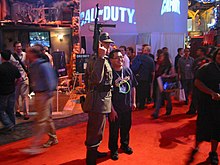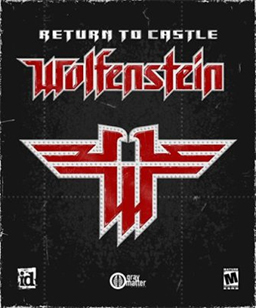
Return to Castle Wolfenstein is a first-person shooter video game published by Activision, released on November 20, 2001, for Microsoft Windows and subsequently for PlayStation 2, Xbox, Linux and Macintosh. The game serves as a reboot of the Wolfenstein series. It was developed by Gray Matter Studios and Nerve Software developed its multiplayer mode. id Software, the creators of Wolfenstein 3D, oversaw the development and were credited as executive producers. The multiplayer side eventually became the most popular part of the game, and was influential in the genre. Splash Damage created some of the maps for the Game of the Year edition. A sequel, titled Wolfenstein, was released on August 18, 2009.

Red Faction is a first-person shooter video game developed by Volition and published by THQ for PlayStation 2 and Microsoft Windows in 2001, and Macintosh platforms in 2001 and 2002. A version for the N-Gage was developed by Monkeystone Games, and the mobile version was developed by Blue Beck. The game was inspired by several works of contemporary science fiction.

Sid Meier's Civilization II is a turn-based strategy video game in the Civilization series, developed and published by MicroProse. It was released in 1996 for PCs, and later ported to the PlayStation by Activision.
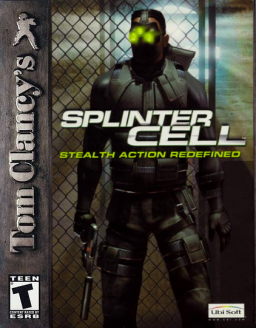
Tom Clancy's Splinter Cell is a 2002 stealth game developed by Ubisoft Montreal and published by Ubisoft. It is the first game in the Splinter Cell series. Endorsed by author Tom Clancy, it follows the activities of NSA black ops agent Sam Fisher. The game was inspired by both the Metal Gear series and games created by Looking Glass Studios, and was built using Unreal Engine 2.
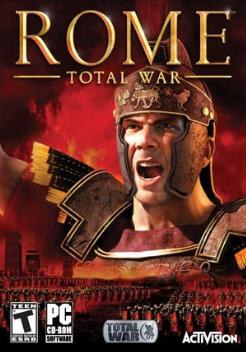
Rome: Total War is a strategy video game developed by The Creative Assembly and originally published by Activision; its publishing rights have since passed to Sega. The game was released for Microsoft Windows in 2004. The macOS version was released on February 5, 2010, by Feral Interactive, who also released the iPad version on November 10, 2016, the iPhone version on August 23, 2018, and the Android version on December 19, 2018. The game is the third title in The Creative Assembly's Total War series, following Shogun: Total War, and Medieval: Total War.
Infinity Ward, Inc. is an American video game developer. They developed the video game Call of Duty, along with seven other installments in the Call of Duty series. Vince Zampella, Grant Collier, and Jason West established Infinity Ward in 2002 after working at 2015, Inc. previously. All of the 22 original team members of Infinity Ward came from the team that had worked on Medal of Honor: Allied Assault while at 2015, Inc. Activision helped fund Infinity Ward in its early days, buying up 30 percent of the company, before eventually fully acquiring them. The studio's first game, World War II shooter Call of Duty, was released on the PC in 2003. The day after the game was released, Activision bought the rest of Infinity Ward, signing employees to long-term contracts. Infinity Ward went on to make Call of Duty 2, Call of Duty 4: Modern Warfare, Call of Duty: Modern Warfare 2, Call of Duty: Modern Warfare 3, Call of Duty: Ghosts, Call of Duty: Infinite Warfare, the Modern Warfare reboot, and its sequel.

Worms World Party is a 2001 artillery turn-based tactics video game developed by Team17, and is the sequel to Worms Armageddon in the Worms series. As with the previous games in the series, players take turns controlling their teams and using available projectiles, firearms, explosives, and equipment to destroy all opposing teams and manoeuvre across a specified and highly destructible map.
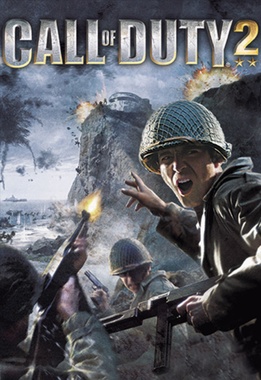
Call of Duty 2 is a 2005 first-person shooter video game developed by Infinity Ward and published by Activision in most regions of the world. It is the second installment of the Call of Duty series. Announced by Activision on April 7, 2005, the game was released for Microsoft Windows on October 25, 2005, and as a launch title for the Xbox 360 on November 22, 2005. Other versions were eventually released for OS X, mobile phones, and Pocket PCs.

Call of Duty 3 is a 2006 first-person shooter video game developed by Treyarch and published by Activision. It is the third major installment in the Call of Duty series. It was released for PlayStation 2, Xbox, Xbox 360, PlayStation 3 and Wii. It was a launch title for the PlayStation 3 and Wii in North America, Europe and Australia. It is also the only major installment to not release on the PC.

Baldur's Gate is a role-playing video game that was developed by BioWare and published in 1998 by Interplay Entertainment. It is the first game in the Baldur's Gate series and takes place in the Forgotten Realms, a high fantasy campaign setting, using a modified version of the Advanced Dungeons & Dragons (AD&D) 2nd edition rules. It was the first game to use the Infinity Engine for its graphics, with Interplay using the engine for other Forgotten Realms-licensed games, including the Icewind Dale series and Planescape: Torment. The game's story focuses on a player-made character who travels across the Sword Coast alongside a party of companions.

Robin Hood: The Legend of Sherwood is a 2002 stealth-based real-time tactics video game developed by Spellbound Entertainment. It is similar to games such as Desperados: Wanted Dead or Alive and the Commandos series. In the game, the player controls up to five characters in a setting based on the stories of the protagonist, Robin Hood. The player can also control Robin Hood's Merry Men, including Little John, Friar Tuck, Will Scarlet, Will Stutely, and Maid Marian. Robin and his crew must evade the cruel Sheriff of Nottingham and his henchmen and stop the machinations of the vile usurper to England's throne, Prince John. However, Robin must avoid killing enemies as much as possible, or he will not be able to recruit as many new Merry Men.
Call of Duty is a video game series and media franchise published by Activision, starting in 2003. The games were first developed by Infinity Ward, then by Treyarch and Sledgehammer Games. Several spin-off and handheld games were made by other developers. The most recent title, Call of Duty: Modern Warfare III, was released on November 10, 2023.
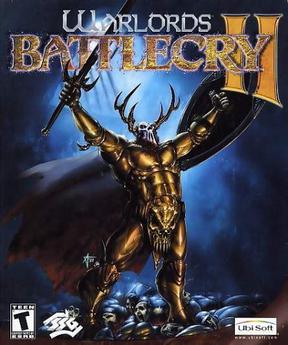
Warlords Battlecry II is a real-time strategy and role-playing game, developed by Strategic Studies Group (SSG) as the sequel to Warlords Battlecry. It was released on March 12, 2002. The game requires the player to build buildings and create units in order to defeat the enemy, while sending their hero on optional quests.

Commandos: Behind Enemy Lines is a 1998 real-time tactics video game developed by the Spanish company Pyro Studios and published by Eidos Interactive. The game sees players take control of a group of six Allied Commandos, who conduct a range of missions across wartime Europe and Africa, using small unit tactics. Each mission's objective varies, but ranges from sabotage, assassination or rescuing captured allied units, with players having a full view of a mission's map to plan their strategy and its execution in advance.

Call of Duty 4: Modern Warfare is a 2007 first-person shooter video game developed by Infinity Ward and published by Activision. It is the fourth main installment in the Call of Duty series. The game breaks away from the World War II setting of previous entries and is instead set in modern times. Developed over two years, Modern Warfare was released in November 2007 for the PlayStation 3, Xbox 360, and Microsoft Windows and was ported to the Wii as Call of Duty: Modern Warfare – Reflex Edition in 2009.

Battlefield 1942: Secret Weapons of WWII is the second of two expansions to the World War II first-person shooter computer game Battlefield 1942. It was released for Microsoft Windows on 4 September 2003 in North America and 5 September 2003 in Europe. It was also released for Mac OS X on 25 October 2004.

Call of Duty: World at War is a 2008 first-person shooter game developed by Treyarch and published by Activision. It is the fifth main installment of the Call of Duty series and is the fourth entry in the series to be set during World War II. The game was announced by Activision in June 2008 and was released in November 2008, for PlayStation 3, Windows, Xbox 360, and Wii. Various games under the World at War title were published for the Nintendo DS and PlayStation 2, such as Final Fronts, featured different storylines and missions.

Call of Duty: Modern Warfare 2 is a 2009 first-person shooter game developed by Infinity Ward and published by Activision. It is the sixth installment in the Call of Duty series and the direct sequel to Call of Duty 4: Modern Warfare. It was released worldwide on November 10, 2009, for Windows, PlayStation 3, and Xbox 360. A separate version for the Nintendo DS, titled Modern Warfare: Mobilized, was also released on the same day. A version for OS X was developed by Aspyr and released in May 2014, and the Xbox 360 version was made backward compatible for the Xbox One in 2018.

Call of Duty: Ghosts is a 2013 first-person shooter video game developed by Infinity Ward and published by Activision. It is the tenth major installment in the Call of Duty series and the sixth developed by Infinity Ward. It was released for PlayStation 3, Wii U, Windows, and Xbox 360, on November 5, 2013. The game was released with the launch of the PlayStation 4 and Xbox One.


